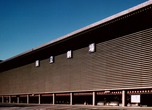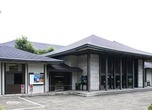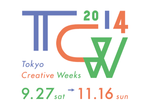Nihon buyo rises to the challenge
Young blood raises the entertainment value of traditional dance

Photo Kishin Shinoyama
Posted: Tue Jun 08 2010
Kabuki and Noh enjoy a certain degree of popularity, especially recognition as specimens of traditional Japanese culture; however, there probably are not that many people who have actually seen a live performance of nihon buyo (traditional Japanese dance). Even among Japanese this may strike some as surprising, despite the fact that it’s the culmination of the best of traditional Japanese dance going back to times long past, and is in its own right a wonderfully entertaining evening of performance art that is well worth seeing.
Though Tokyo offers ample opportunity to enjoy live dance, compared to kabuki and Noh, nihon buyo is suffering from a lack of exposure. According to Minosuke Nishikawa – the central member of Goyokai, Japan’s leading nihon buyo troupe – the problem is that, ‘though nihon buyo is recognized as a field worthy of study, people do not really think of it as something that you actually just go to see.’
Nihon buyo is more organized around rhythm, melody and movement, compared to kabuki and kyogen (farce played during a Noh cycle), which are primarily developed through words. As such, it is an art form better suited for appealing directly to people’s emotional sensibilities, which should actually make it easier for young audiences to connect with, compared to other traditional art forms.
So what exactly is nihon buyo then? Well, for starters it has more than 400 years of history. It’s originally based in part on Noh – which is even older still – and also on the techniques of earlier traditional dances from every corner of Japan. It combined these various dance techniques, and added some new steps of its own to the mix. Occupying a large position in all this is kabuki-odori (kabuki dance steps). Kabuki is a form of entertainment that combines the elements of drama, music, and traditional dance. It got its start in the early 17th century, giving rise to a whole new school of choreographers. Their techniques have been handed down and improved upon from one generation to the next; the result is the nihon buyo that is still gracing the stage today.
Modern nihon buyo can be classified into two general categories, Edo-style odori, and kamigata-style (Edo period Kyoto style) mai (dance). There are five major Edo schools: Nishikawa, Fujima, Bando, Hanayagi, and Wakayagi. Kamigata has four schools, Yamamura, Inoue, Yoshimura, and Umemoto. Of these nine schools the one with the longest history is the Nishikawa school, which is currently led by its tenth Headmaster, Senzou Nishikawa, the living national treasure and father of Minosuke Nishikawa, the current leader of Goyokai. Starting with the first Senzou Nishikawa back in the early 18th century (Edo period) the Senzou family members have choreographed many a kabuki dance scene. Quite possibly the most famous of Kabuki’s musical programs, ‘Kanjincho,’ was choreographed by the fourth headmaster.
Nihon buyo’s place in the cultural canon is assured – in part due to its long tradition and sterling accomplishments – but the young professionals who have been charged with carrying on the tradition sense an element of danger in it continuing as an ‘art form.’
‘I would like people to realize that they can just get a ticket and come and watch us, just like they would with any other style of professional dance. That is what the five of us were thinking when we started Goyokai. Of course the nihon buyo that people study for its cultural significance is also important, but we would really like for people to feel that we are putting on a show that is worth paying money to see. We realise that the problem is that there is not this acknowledgment that nihon buyo is something that people just go to see, even though it is actually quite entertaining to watch,’ says Nishikawa.
Nishikawa’s advice for people watching for the first time goes right to the heart: ‘It’s dance, so there isn’t any dialogue to follow. Yes, the dancing is choreographed to go with the singing, but one needn’t strain to follow the lyrics. Just feel the rhythm. Just let what’s expressed by the movement seep in down deep inside of you.’
Though you may not have been able to make the May 23 performance, this professional nihon buyo family, whose (gracious) lot in life is to fascinate audiences will continue to do so, as we hope they will perform for a long time to come. One thing is for sure: you should definitely take the ‘Is nihon buyo worth watching?’ challenge – we guarantee you won’t be disappointed.
Goyokai
Website: www.goyokai.com/
Tweets
- About Us |
- Work for Time Out |
- Send us info |
- Advertising |
- Mobile edition |
- Terms & Conditions |
- Privacy policy |
- Contact Us
Copyright © 2014 Time Out Tokyo














Add your comment